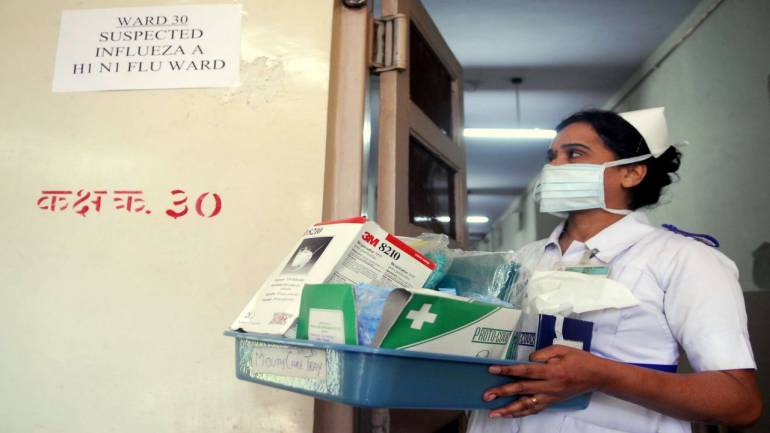Recently, swine flu resurfaced in India and began to haunt, over 600 cases were registered after its breakout. The epidemic is a serious concern though it is not the first, or the largest in India.

According to data released by Union Health Ministry, swine flu in India has claimed over 312 lives, with over 9,000 cases being reported. Alarmingly, over 86 deaths were reported in the last week itself.
Rajasthan has the highest number of deaths reported at 107, followed by Gujarat at 55. While this is the latest data released by the government, a swine flu epidemic in India is not new. Cases have been reported on an intermediate basis since 2012, with a spike in 2015.
Cause of Disease
Swine flu, or H1N1 is a respiratory disease. It affects pigs, which is why the name, but a particular type of influenza also affects humans. Swine flu is a highly contagious disease, which means that it can spread through human contact and can, in fact, affect a person even if an individual touches the surface that an infected person has had contact with before.
According to the National Health Portal of India, swine flu can infect an individual up to 6 feet away, and spreads mainly when an infected person sneezes, coughs or talks.
Symptoms
A number of deaths have occurred because swine flu was not recognised as such. The symptoms, according to the National Health Portal, include fever, headache, running nose, sore throat, shortness of breath, loss of appetite and diarrhoea. While these symptoms, when looked at individually, are common, doctors suggest that an individual suffering from all or most of these symptoms together should immediately consult a health practitioner.
Swine Flu in India
Although the recent epidemic is a serious concern, it is not the first, or the largest in India. Swine flu cases have been reported in India on an intermediate basis since 2012. While 2014 was the year when the least number of cases were reported at 914, the next year saw a spike in the number of cases, with 42,592 cases getting reported and almost 3,000 deaths.
This pattern has seen a repetition, with 2016 having reported fewer cases and 2017 seeing another spike. The highest number of cases in a single year happened in the state of Maharashtra in 2015, with over 8,000 cases being reported.
The Reason For The Spike In Its Numbers
While causes behind the spread of the disease and how they spread are common across the world, there are certain socio-economic reasons why the epidemic might have spiked in India.
For instance, in Rajasthan, according to an Indian Express report, a number of patients who think they might be infected have to travel long distances in order to get checked, which, according to the report, discourages many. Moreover, there is also an acute lack of diagnostic centres. This problem, according to experts, is common for almost every state.
Measures Taken By Indian Government
In Rajasthan, the state government has carried out drives with the purpose of making people aware of the symptoms of the disease and the importance of recognising them and getting oneself checked. However, reports have suggested that this drive included students from government and private colleges who were sent without the necessary safety gear.
The Health Ministry has asked state governments to bolster their surveillance for early detection of the disease and also keep beds reserved in hospitals to deal with acute cases, which require ventilator facility.
States have also been advised to involve district collectors in enhancing public awareness and outbreak response.
The guidelines for influenza vaccination and details of manufacturers of vaccine provided by Drug Controller General of India (DGCI) have been shared with all states. Communication material for preventive measures has also been shared. Video conferences are being held regularly to monitor the situation.
An advisory for preparedness to seasonal influenza A (H1N1) was issued and the Integrated Disease Surveillance Programme (IDSP) and its state units have enhanced surveillance for Influenza-like Illness (ILI) and Severe Acute Respiratory Infections (SARI).
The DGCI has been asked to coordinate with drug manufacturers and monitor the availability of Oseltamivir, the medicine recommended by WHO, in various states.
The Health Ministry has recommended vaccination for healthcare workers and other priority groups.
Source: PTI
Stay tuned for more updates!




